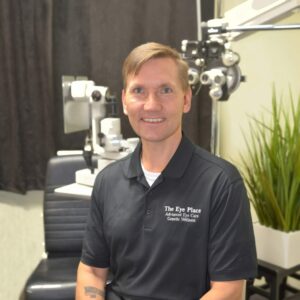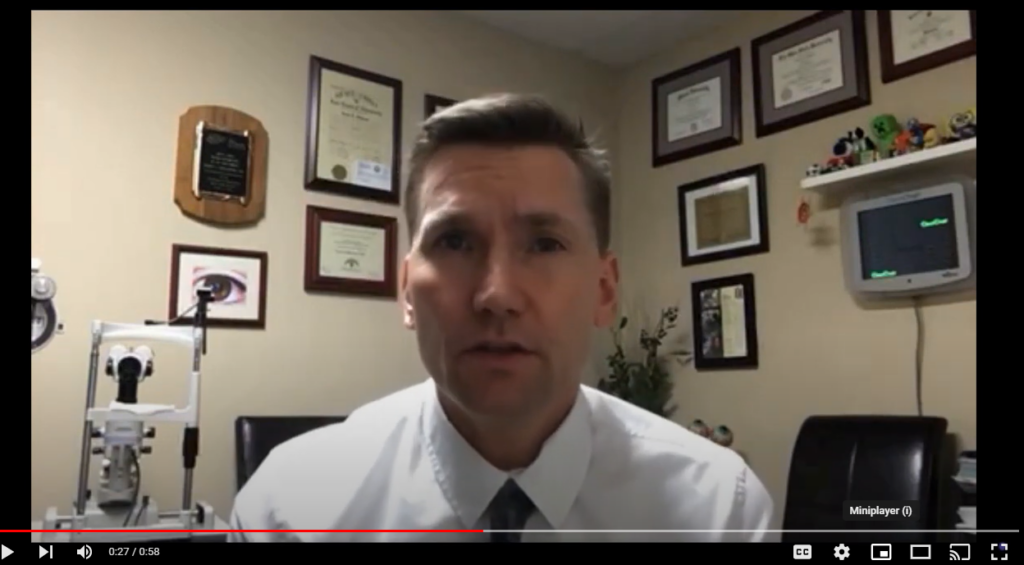

Technology innovations play a large role in the evolving landscape of optometry. Scott Sedlacek, OD, owner of The Eye Place in Olmsted Falls, Ohio, is using technology to not only redefine patient care in his practice but also set a benchmark for optometrists nationwide, he says. He leverages artificial intelligence (AI) and customized health programs to combat age-related macular degeneration (AMD).
At the heart of Dr. Sedlacek’s approach is the Macular Program, a customized prevention strategy launched in 2015 and revitalized after the COVID-19 pandemic. This program is provided to eye doctors using telemedicine and is designed to manage the risk of AMD proactively. By analyzing patients’ blood to tailor a specific regimen of vitamin supplements, the program aims to maintain macular health at its optimum. With a focus on early detection through functional testing like dark adaptation, for which he uses AdaptDx, the program employs the HOMING approach. This is an acronym for hormones, oxidation, methylation, inflammation, nutrition and genetics/epigenetics, designed to provide a holistic prevention strategy. Dr. Sedlacek’s patients have reported not just stabilization of their condition but, in some cases, notable improvements in their vision.
AI ASSISTANCE
To enhance diagnostic accuracy and patient care further, Dr. Sedlacek utilizes the ALTRIS AI system for analyzing optical coherence tomography (OCT) images. This cutting-edge AI tool empowers his practice by augmenting the capability to discern finer details in OCT scans, surpassing what the human eye can detect. It represents a significant leap forward in identifying, visualizing, and describing early signs of macular degeneration and other retinal conditions, offering patients a higher standard of personalized eye care.
But Dr. Sedlacek’s integration of AI doesn’t stop at diagnostics. He’s also harnessing the technology to revolutionize how optometrists communicate complex medical information to their patients. By creating AI-generated video messages, Dr. Sedlacek can deliver consistent, personalized communication without the need for repeated video takes. These messages feature a digital avatar that looks and sounds remarkably like him, providing advice and information directly to patients. This innovative use of AI avatars not only saves time but ensures that patients receive information in a clear, engaging manner. “It’s a game-changer for patient education, making complex medical advice more accessible and understandable,” he says.


IS THAT HIM OR HIS AVATAR?
Dr. Sedlacek’s forward-thinking use of AI in both diagnostics and patient communication exemplifies the potential of technology to modernize the profession of optometry. He encourages other optometrists who are joining the Macular Program network to adopt similar technologies to provide cohesive, informed care across the board.
“Patients ask about it, and while ODs understand the science, they are not always prepared to talk about it. By giving them a script that they can use for their own AI avatar, it will allow them to educate patients with a uniform message,” he says.
His efforts are not just about leveraging new tools for the sake of innovation; they’re about fundamentally improving patient education and outcomes while improving the practice income and setting a new standard for care in optometry.
Dr. Sedlacek says he’s finding more and more opportunities to use AI in his practice. He is also a provider for Eyedaptic eyewear, the Eye5 augmented reality AI glasses to help people with reduced vision. “The goal is to prevent, stabilize, and even to a degree reverse vision loss; however, my patients with low vision can be helped with AI right now.”
Dr. Sedlacek’s work highlights the integral role of AI in advancing patient care, education, and communication. His approach underscores the promise of technology in transforming health care delivery, making it more personalized, accurate and accessible than ever before. Doctors interested in learning more can contact Dr. Sedlacek directly or visit the macular program.
Featured photo credit: Getty Images, Andriy Onufriyenko



